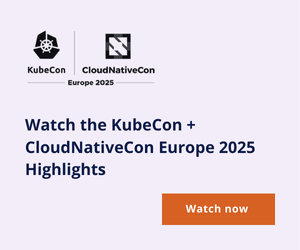Remember when infrastructure configuration was a manual process? Those days are over. Just as infrastructure evolved from physical servers to Infrastructure-as-Code (IaC), policy enforcement has gone through the same transformation. Policy-as-Code (PaC) is the next logical step, moving from manual policy documents and spreadsheets to programmatically defined, automatically enforced rules.
PaC is about writing policies in code that can be version-controlled, tested, and automatically enforced across your infrastructure. This brings the DevOps principles of automation, version control, and continuous integration/continuous deployment (CI/CD) to governance and compliance.
In fact, according to a 2023 Styra study, a striking 94% of technical decision‑makers now consider Policy‑as‑Code critical for scalable security and compliance, while 88% of organizations have already adopted it for cloud‑native applications.
In this article, you’ll explore how PaC has become a foundational pillar for modern governance, especially as AI and cloud-native applications scale rapidly.
From DevOps to AI governance
DevOps changed how we build and deploy software by automating, collaborating, and continuous delivery. PaC applies the same principles to policy management, bringing several benefits:
- Consistency: Policies defined as code are applied the same way every time, with no human error in manual policy enforcement.
- Auditability: With policies in version control, you have a complete history of policy changes, who made them, and when.
- Testability: Policies can be tested before deployment, reducing the risk of unintended consequences.
- Scalability: Automated policy enforcement scales effortlessly, even across thousands of resources.
With AI systems in the picture, these principles are even more important. AI applications introduce new layers of complexity that traditional policy approaches can’t handle. Do you know how to ensure an AI system complies with data privacy regulations when the system itself is learning and evolving? That’s where PaC comes in.
PaC components
Ready to implement PaC in your organization? Here are the core components of a PaC framework:
Policy definition languages
Open Policy Agent (OPA) is a general-purpose policy engine that unifies policy enforcement across your entire tech stack. Its powerful capabilities let you have consistent governance regardless of where your apps and services run. Alongside OPA, you’ll find Rego—OPA’s declarative policy language that lets you express complex policies in a concise, readable format that both devs and security teams can understand.
HashiCorp’s Sentinel is another option, especially useful if you’re already using tools like Terraform and Vault. This policy language integrates seamlessly with HashiCorp’s ecosystem, so it’s a natural choice if you’re heavily invested in their toolchain. For AWS-centric environments, the AWS Cloud Development Kit (CDK) lets you define both cloud infrastructure and policies using familiar programming languages like TypeScript or Python—no need to learn new syntax.
Policy enforcement points
For PaC to work, you need to enforce it at strategic points throughout your infrastructure and application lifecycle. Your CI/CD pipelines are the first line of defense, allowing you to block deployments that violate security or compliance policies before they hit production.
Runtime environments enforce policies in real-time, protecting apps even if issues bypass pre-deployment checks. In Kubernetes, admission controllers enforce policies by reviewing and rejecting non-compliant resource requests. Finally, identity and access management (IAM) systems ensure least-privilege access, tightly controlling who can access what resources.
The most robust PaC implementations don’t rely on a single enforcement point—they have defense in depth by enforcing policies at multiple stages of your tech lifecycle. This layered approach means even if one control fails, others will catch the violation.
AI frameworks
PaC for AI systems requires integration across the entire AI lifecycle. Start with model development, and enforce policies during training to match your organization’s standards. Feature stores ensure training data meets privacy and security rules and prevent bias and violations early. At deployment, model registries validate models against performance, ethical, and compliance policies.
In production, monitoring systems enforce fairness and bias policies, and explainability tools support regulatory requirements like GDPR. Embed policy enforcement throughout to ensure ongoing, adaptive compliance as models change. Besides GDPR, consider the EU AI Act or the US Blueprint for an AI Bill of Rights.
These frameworks are all about transparency, accountability, and user rights and principles that can be enforced through PaC. For example, policies can track consent, limit data retention, or require explainability thresholds during model testing. Proactive policy enforcement means you’re ahead of compliance, not reacting to incidents after the fact.
Getting Started with PaC: A Practical Roadmap
Use this checklist to kick off your Policy-as-Code journey:
- Audit current compliance workflows: Identify repetitive, manual tasks that can be automated with code.
- Select a pilot enforcement point: Start with a high-impact area like your CI/CD pipeline or a Kubernetes admission controller.
- Experiment with open-source tools: Use tools like Open Policy Agent (OPA) and Rego to define and test policies.
- Integrate version control: Track policy changes, authors, and test history using Git or a similar system.
- Modularize your policies: Create reusable policy templates and modules for consistency and scalability.
- Automate policy testing: Add policy validation to your CI workflows to catch issues early.
- Define ownership and collaboration: Assign clear responsibilities across DevOps, security, and compliance teams to maintain and evolve your policy codebase.
Securing the future of AI with policy guardrails
PaC provides the foundation to ensure AI systems operate within bounds, even as those systems become more autonomous and complex. Organizations that embed PaC early also get easier audits, reduced risk, and faster incident response when something goes wrong. Think of PaC not as a barrier but as a smart filter that enables innovation within safe and defined boundaries, so teams can build with confidence, speed, and trust.






